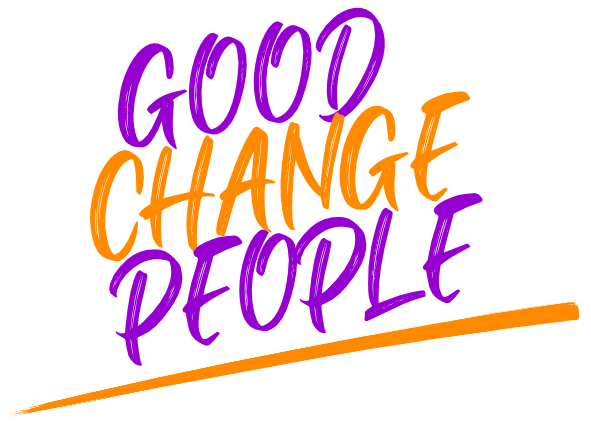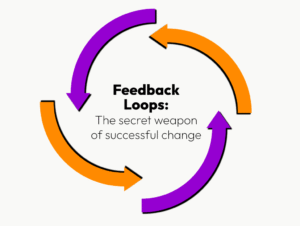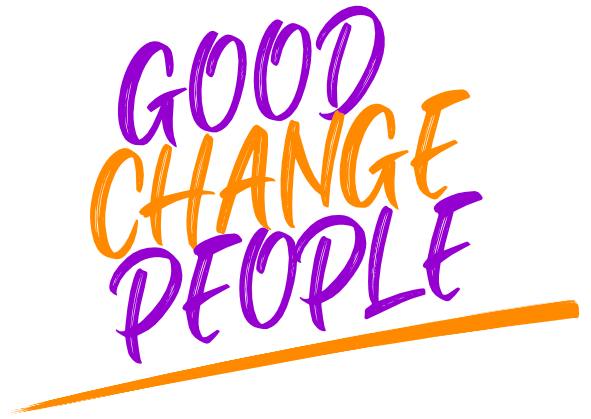At Good Change People, we believe Change Management is fundamentally about people. While strategies, processes, and technologies form the backbone of organisational transformation, the ultimate success or failure of any change initiative rests on the human response to it. Research consistently shows that the majority of change initiatives fail not due to poor strategy or inadequate resources, but because of human resistance and lack of engagement.
At the heart of successful change management lies a profound understanding of human psychology, the cultivation of trust, and the application of empathy. These elements don’t just make change more palatable; they make it more effective and sustainable.
As a people-centric change management consultancy that assists in implementing lasting change, here is some advice on understanding and building trust and empathy within change management.
Understanding the Emotional Landscape of Change
Change disrupts the familiar and introduces uncertainty. Even positive changes can trigger stress responses because they require people to abandon established patterns and venture into unknown territory. The human brain is wired to perceive uncertainty as a threat, activating the same neural pathways involved in physical danger responses.
This means resistance to change isn’t necessarily about stubbornness; it’s often a natural protective mechanism. When leaders understand this, they can approach resistance with empathy rather than frustration, recognising it as valuable feedback rather than an obstacle to overcome. The emotional journey of change follows predictable patterns;
Initial shock or anxiety — followed by confusion and frustration — eventually acceptance and commitment with proper support.
Leaders who acknowledge and plan for these emotional stages are far more likely to guide their teams successfully through transitions.
The Trust Foundation
Trust is the bedrock upon which all successful change is built. Without it, even the most well-designed change initiatives will struggle to land.
Trust operates on multiple levels:
- Trust in leadership’s competence and intentions.
- Trust in the organisation’s ability to execute change effectively.
- Trust that employees will be supported throughout the process.
Building trust during change requires consistent action over time. Leaders must demonstrate reliability by following through on commitments, maintaining transparency about both successes and setbacks, and showing genuine concern for employee wellbeing.
Vulnerability plays a crucial role in building trust. When leaders admit they don’t have all the answers or share their own learning process, they create psychological safety that allows others to be honest about their struggles. This vulnerability demonstrates the emotional intelligence and authenticity people need during uncertain times.
Trust is also built through competence. People need to believe their leaders understand what they’re doing and have the skills to navigate change successfully. This means being thoroughly prepared, having clear plans with contingencies, and demonstrating change management expertise.
Empathy as a Change Management Tool
Empathy (the ability to understand and share the feelings of others) is perhaps the most underutilised tool in change management. Empathetic leaders take time to listen actively to concerns without immediately jumping to solutions or dismissing feelings as irrational.
Practicing empathy means putting yourself in your employees’ shoes. Consider how change affects their daily routines, sense of competence, relationships with colleagues, and career aspirations. Think about what they’re being asked to give up and what they’re being offered in return.
Empathy also involves recognising that people respond to change differently based on their personalities, experiences, and circumstances. Effective change management accommodates these differences rather than applying a one-size-fits-all approach.
Building Emotional Intelligence in Change Leaders
Emotional intelligence (the ability to recognise, understand, and manage emotions in yourself and others) is essential for effective change leadership. It encompasses self-awareness, self-regulation, motivation, empathy, and social skills.
- Self-awareness involves understanding your own emotional responses to change and how these affect your decision-making.
- Self-regulation is managing emotions constructively, especially during stressful periods. Change leaders who can maintain composure and respond thoughtfully rather than reactively are better positioned to guide their teams through difficulties.
- The social skills component includes effective communication, relationship building, conflict management, and positive influence. These skills enable leaders to create the collaborative environment necessary for successful change implementation.
Practical Strategies for Building Trust and Empathy
Creating trust and demonstrating empathy requires intentional effort and specific strategies. Here are some strategies that you could employ:
- Regular, honest communication is fundamental. Share not just what’s happening and when, but why changes are necessary, expected outcomes, and how decisions are made. Acknowledge when you don’t know something and commit to finding answers.
- One-on-one conversations are invaluable for building trust and understanding individual concerns. Focus on listening rather than convincing, ask open-ended questions about how change affects the person, and explore what support they need.
- Create feedback channels through surveys, focus groups, or regular team meetings dedicated to discussing change-related concerns. This feedback must be taken seriously and responded to visibly.
- Involve employees in the change process wherever possible. People are more likely to support changes they help design and implement, whether through planning committees, piloting processes, or serving as change champions.
The Role of Storytelling in Change
Humans are storytelling creatures, and narratives play a powerful role in how we make sense of change. Effective change leaders use storytelling to help people understand not just what is changing, but why it matters and how it connects to larger purposes. Personal stories can be particularly powerful when leaders share their own experiences with similar changes.
The most compelling change stories;
- Acknowledge the difficulty of the current situation
- Paint a vivid picture of a better future
- Show how proposed changes will bridge the gap.
Supporting Individual Change Journeys
While change happens at an organisational level, it’s experienced individually. Effective change management provides personalised support, whether through different training approaches, flexible timelines, or additional coaching for those facing particular challenges.
Creating peer support networks can be incredibly valuable. People going through similar changes can provide mutual encouragement and practical tips. Recognition and celebration of progress helps maintain momentum throughout the change process.
Measuring the Human Side of Change
Traditional change metrics focus on technical milestones, but measuring the human side requires different approaches. Here are a few examples of how you can measure and gain insight into how people are feeling and what support they need;
- Employee sentiment surveys
- Focus groups
- Informal feedback
Engagement metrics like participation in change activities and utilisation of support resources can indicate how well the human aspects are being managed. The key is measuring not just whether changes are implemented, but how well people are adapting.
Long-term Relationship Building
The human side of change management extends beyond individual initiatives. Organisations that consistently prioritise trust and empathy build reputations as places where people feel valued and supported. This reputation makes future changes easier because employees have confidence in leadership’s ability to manage transitions thoughtfully.
Building this reputation requires consistency over time; treating people with respect during difficult changes, being honest about challenges while remaining optimistic, and learning from past experiences.
Final Thoughts
The human side of change management isn’t a soft skill add-on – it’s the foundation upon which all successful change is built. Trust and empathy aren’t luxuries; they’re essential ingredients for sustainable transformation.
Leaders who master the human side build stronger, more resilient organisations that thrive on change rather than merely survive it. In a world where change is constant, success belongs to those who understand that behind every process are human beings with emotions and aspirations. By leading with trust and empathy, organisations create lasting transformation and workplaces where people feel valued and empowered to do their best work.
If you are a leader within the change management world and would like to share a space with like-minded leaders to learn and grow, join our community platform.





